This was published 2 years ago
‘I overcame cancer to be a drag racer’
Drag racing, powerlifting, marathons. More women are embracing physical challenges in midlife and loving it, as Elli Jacobs finds out.
By Elli Jacobs
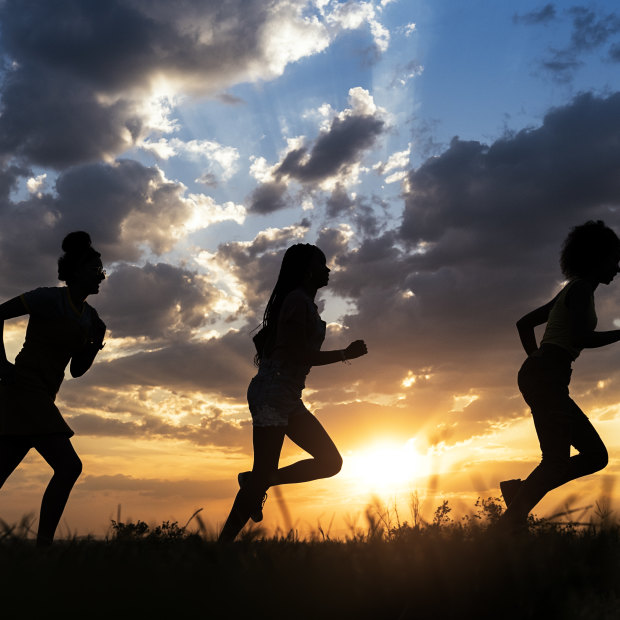
“Taking up an endurance sport after turning 40 is a great way to build self-belief and self-confidence,” says Patrea O’Donoghue.Credit: Stocksy
Forget about the idea of slowing down with age – research shows that women in midlife are becoming more active than ever. According to
a recent national survey, 43 per cent of females aged from 40 to 54 are active five times a week, a figure increases to 47 per cent for those aged 55 to 64.
It’s not just regular exercise that they are embracing, either. Many women are tackling tougher challenges. “Taking up an endurance sport, which is much more taxing on the body than regular exercise, after turning 40 is a great way to build self-belief and self-confidence as you strive over the course of weeks and months to achieve your goals,” says Patrea O’Donoghue, a Brisbane-based sport and exercise psychologist.
“On a physical level, you develop that sense of empowerment that builds from lifting heavier weights, doing more reps, building speed and changing your body for the better,” she adds. “But it also allows you to build resilience, effectively transverse challenging life situations, including making you feel more visible as your age keeps going up.”
Three women share their stories of how new sporting challenges brought benefits to mind, body and spirit.
“I overcame cancer to become a drag racer”
Andy Kahle, 53, is a drag racer who first had to weather treatment for breast cancer to be able to compete.
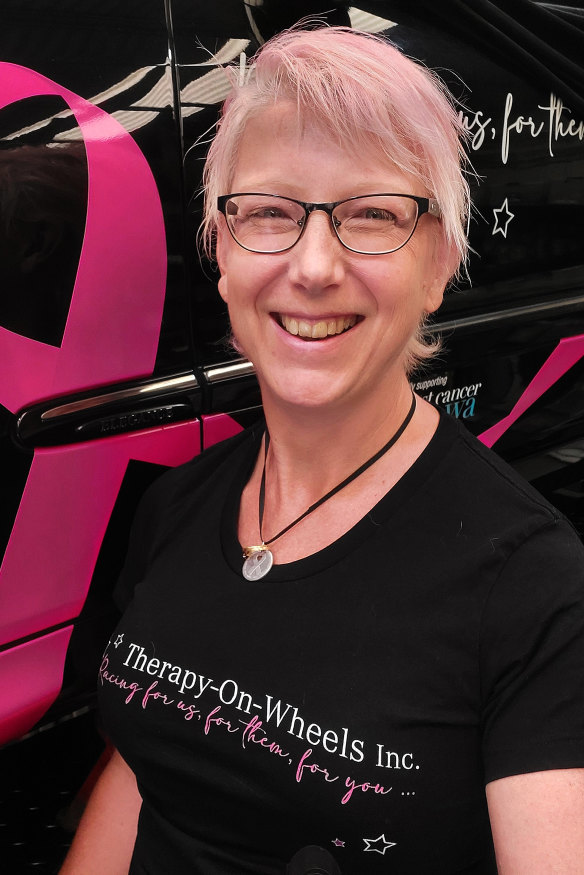
Andy Kahle, 53.
“Back in 2010, after many years of helping as crew on a friend’s drag racing team, my husband Mick and I decided it was time to buy our own drag racing car with me behind the wheel. I used to ride a motorbike, so I was confident in my driving, and with a mentor showing me the ropes I was ready to compete in this male-dominated sport. And being one of the very few females in my category made me even more determined to succeed.
But just before the day I was to begin getting my licence to race, and only a couple of months before my 41st birthday, I discovered a lump in my right breast. Within a month I was undergoing surgery and treatment for aggressive breast cancer. Racing wasn’t an option.
Some days I’d head to the workshop and just sit in my race car, absorbing the residual smells of racing and imagining myself tearing across the finish line. Just being in that atmosphere of enthusiasm and amid a community of unyielding support was brilliant for picking up both my husband’s and my spirits, and giving us both that extra energy to get through the tough moments.
Finally, in October 2011, when most of the surgeries and all the chemo and radiation was finished – my hair still short and post-chemo curly – we loaded up my little Torana and headed to the track for me to sit my licence.
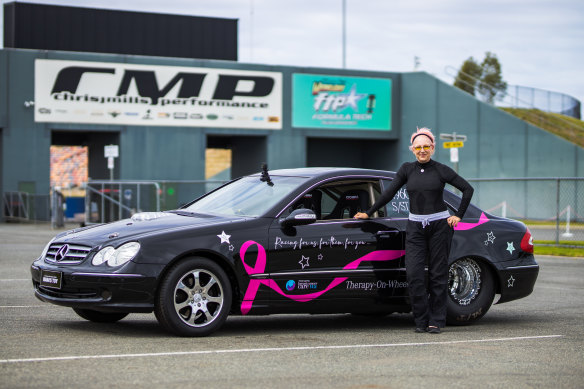
“If you want to try something new, don’t let age be a barrier. It’s all about your head space.”
I was nervous on my first race. I felt that I had just cheated death and was questioning why I was attempting something dangerous. Yet, when I got to the finish line, I had the biggest smile on my face. It really was everything I expected. Making it to the finals on my first race and winning a trophy as a runner-up meant that all that hard work paid off.
I’ve continued to race, and at the age of 53 I’m still loving the experience. I’m proud to say that the mature female racers across the whole sport set an awesome example for the younger generation, and over the last few years I’ve seen many more getting behind the wheel of their own cars.
If you want to try something new, don’t let age be a barrier. It’s all about your head space.”
“Powerlifting helps me switch off”
Ainslee Hooper, 44, is a lifelong wheelchair user who found
strength in powerlifting.
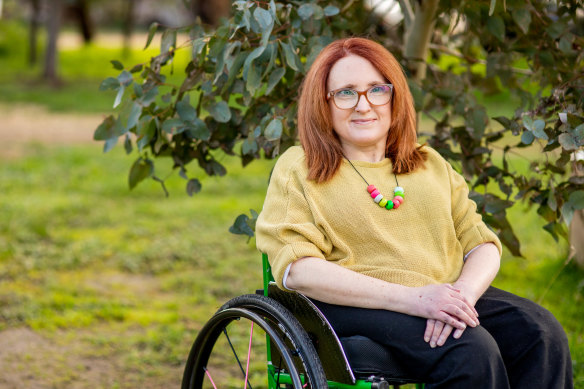
Ainslee Hooper, 44.
“After I resigned from my job in 2019, following years of workplace bullying that led to a nervous breakdown, my powerlifting-enthusiast boyfriend suggested I begin working out with him. I laughed, as I couldn’t imagine myself going to the gym. I pictured all these tattooed meatheads who would just scoff at a chick in a wheelchair.
But I decided to give powerlifting a go, and when I saw I was able to do something independently from my wheelchair, I began training daily. I stopped being that person who wanted to sit in the car waiting for her partner to finish his session. Instead, I couldn’t wait to get to the gym and be around those gym-buffs – who, surprisingly, were an encouraging, friendly bunch of people. It did wonders for my social health, confidence and sense of belonging.
What I also loved about powerlifting was that it shut my brain off. When you’re on the bench, lifting two-thirds of your body weight, your brain can’t think about anything. You must focus, otherwise you could hurt yourself, so it gave me a break from the anxiety.
I gradually realised my potential and in 2018 I took it a step further and began competing professionally, winning gold medals.
At the end of 2021, I was approached by Strongwoman 2017 winner and coach Kerryn Taylor to take part in Strongwoman. Under her guidance, I became the only disabled athlete in the all-abilities competition held in Geelong this January. I felt that I only had myself to compete against, so I succeeded in lifting double the number of weights I’d ever been able to lift in training.
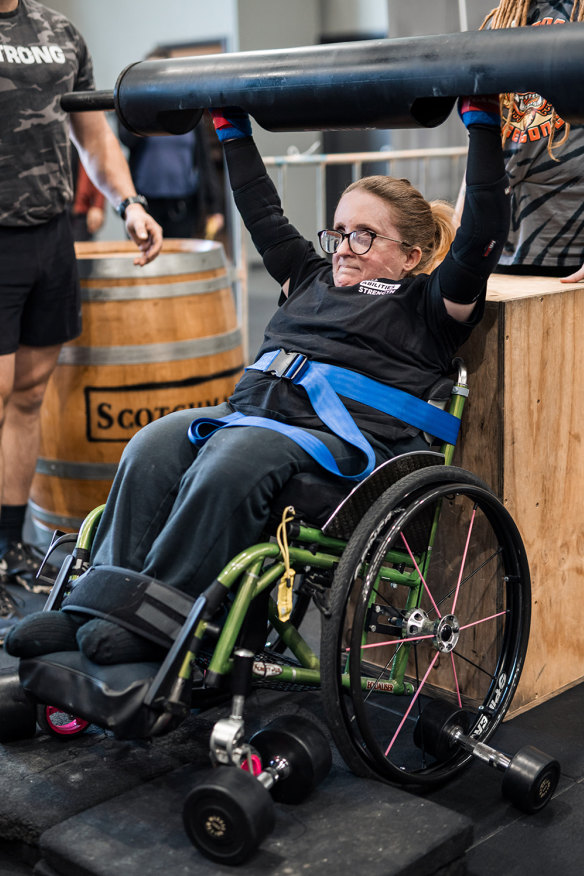
“I stopped being that person who wanted to sit in the car waiting for her partner to finish his session. Instead, I couldn’t wait to get to the gym and be around those gym-buffs.”
The weightlifting community is a tight-knit, inclusive space with no sexism, or ableism, where negative opinions are left at the door. As such, upon hearing other people talk openly about their struggles with mental health and how their commitment to the sport really helped them, it also made me feel safe to begin exploring my own history of mental health issues.
When I realised that anxiety had been prevalent my whole life, it brought residual anger to the surface which I now channel through training and competing – much healthier than suppressing it. So, in a big way, sport has become a form of therapy.
It’s also made me a much more talkative person, and has inspired me to open communication and share my story with others. I’m still learning, but I’ve come a long way and I feel the more I commit to the sport, the more it gives back to me.”
“I went from couch lover to marathon runner”
Andrea Doney, 50, ran her first full marathon last year as a way to overcome emotional trauma.
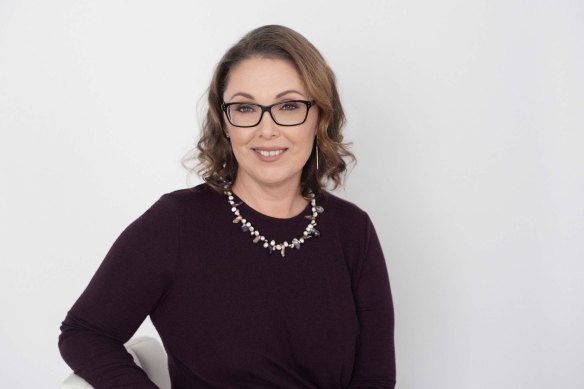
Andrea Doney, 50.
“I’ve always preferred the couch and daytime television to any sporting activity. I actually used to pretend to be sick to get out of the athletics carnival at school.
But when we moved to Perth in 2011, I was raising two young children and overcoming post-traumatic stress around my husband’s health, our prolonged battle with infertility, two friends passing away from cancer, a tenuous pregnancy, and a very premature birth. In a new city with no friends, I needed an outlet for my growing anxiety.
My husband has always been a runner, so he encouraged me to give it
a go. My early five-kilometre runs were physically hard, but almost straight away I discovered it was an unbeatable way to unravel the tangled knots in my head. I always loved who I was after a run – calmer, happier and more patient.
From there the distances grew as I realised how accomplished each morning run made me feel. There’s something about running at sunrise that allowed me to connect with myself and the world in almost a spiritual way, and it became my “me time”. It’s given me pride in myself, and that’s a rare and amazing thing.
As my strength and endurance grew, I began taking part in 21-kilometre half-marathons. After about a dozen, at the age of 49, I started wondering if I could do a full marathon.
I trained over four months, with two or three shorter weekday runs, one long weekend run, including strength work twice a week, until I was running about 30 kilometres fairly comfortably.
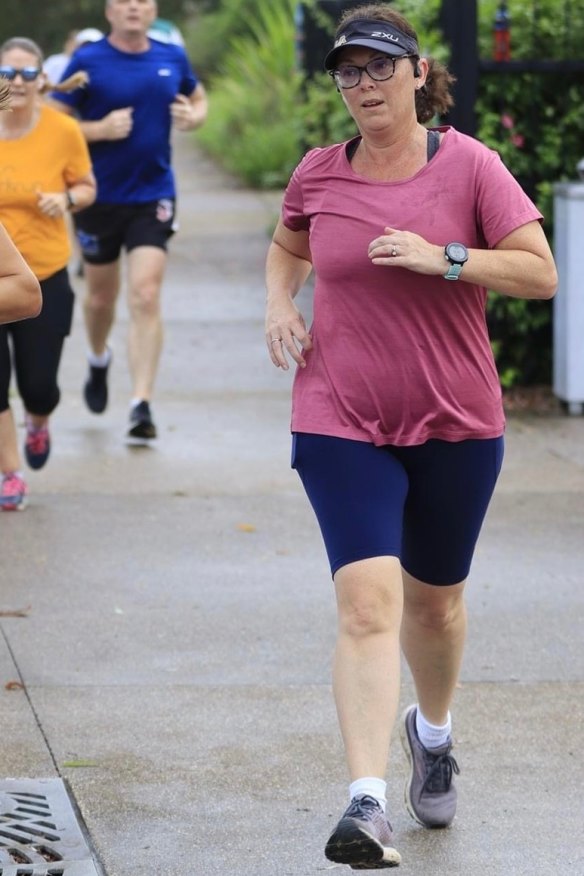
“I spent most of my life thinking that I could never run a marathon. I will now spend the rest of my life knowing that I did.”
In April 2021, I ran my first full marathon in Canberra. I had no illusions about how hard the race would be, and the physical toll it would take, and I was right. It was long and painful, but the feeling when I crossed that finish line was utterly unforgettable. I spent most of my life thinking that I could never run a marathon. I will now spend the rest of my life knowing that I did. I ultimately decided to qualify as a running coach specialising in slower, older, bigger and injured runners in a sector that frequently discusses running in terms of speed, physicality and strength.
The Slow Coach [her online running forum] encourages anyone to overcome the intimidation of taking up long-distance running, as it’s about mindset, training and consistency and not only about what your body looks like.
My physique isn’t in any way what the mainstream would view runners
to look like. I have a mummy tummy, I’m a bit bigger, and I wear thick glasses, but my running accomplishments have given me the confidence to stop caring about how I look and worrying what others think, and that’s because of my very visceral understanding that my imperfect body is still capable of some quite remarkable things.
I feel running has given me a celebration of what imperfection can do and that’s been liberating.”
Make the most of your health, relationships, fitness and nutrition with our Live Well newsletter. Get it in your inbox every Monday.